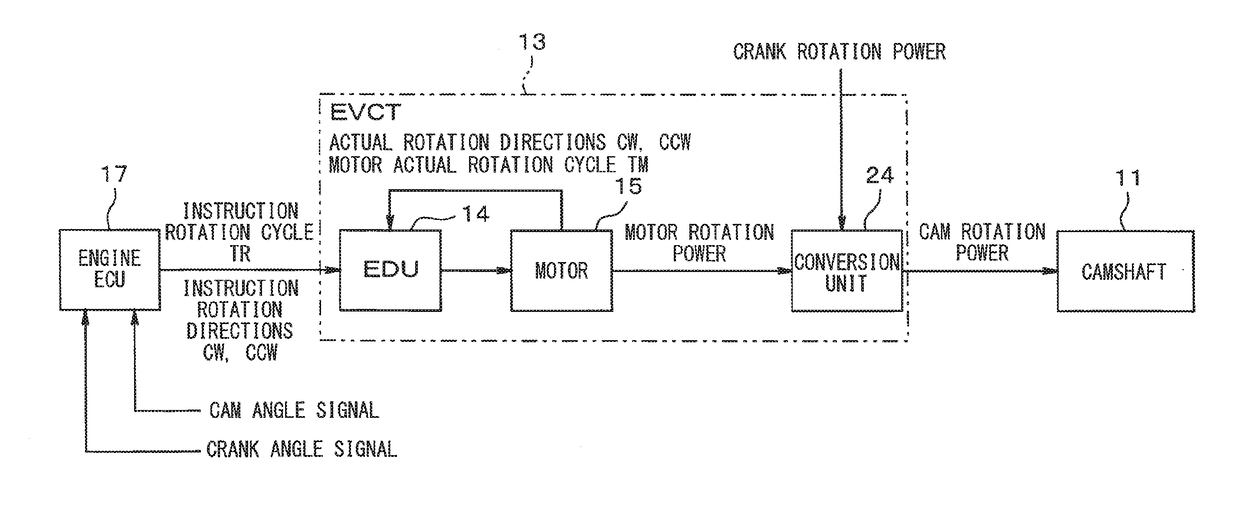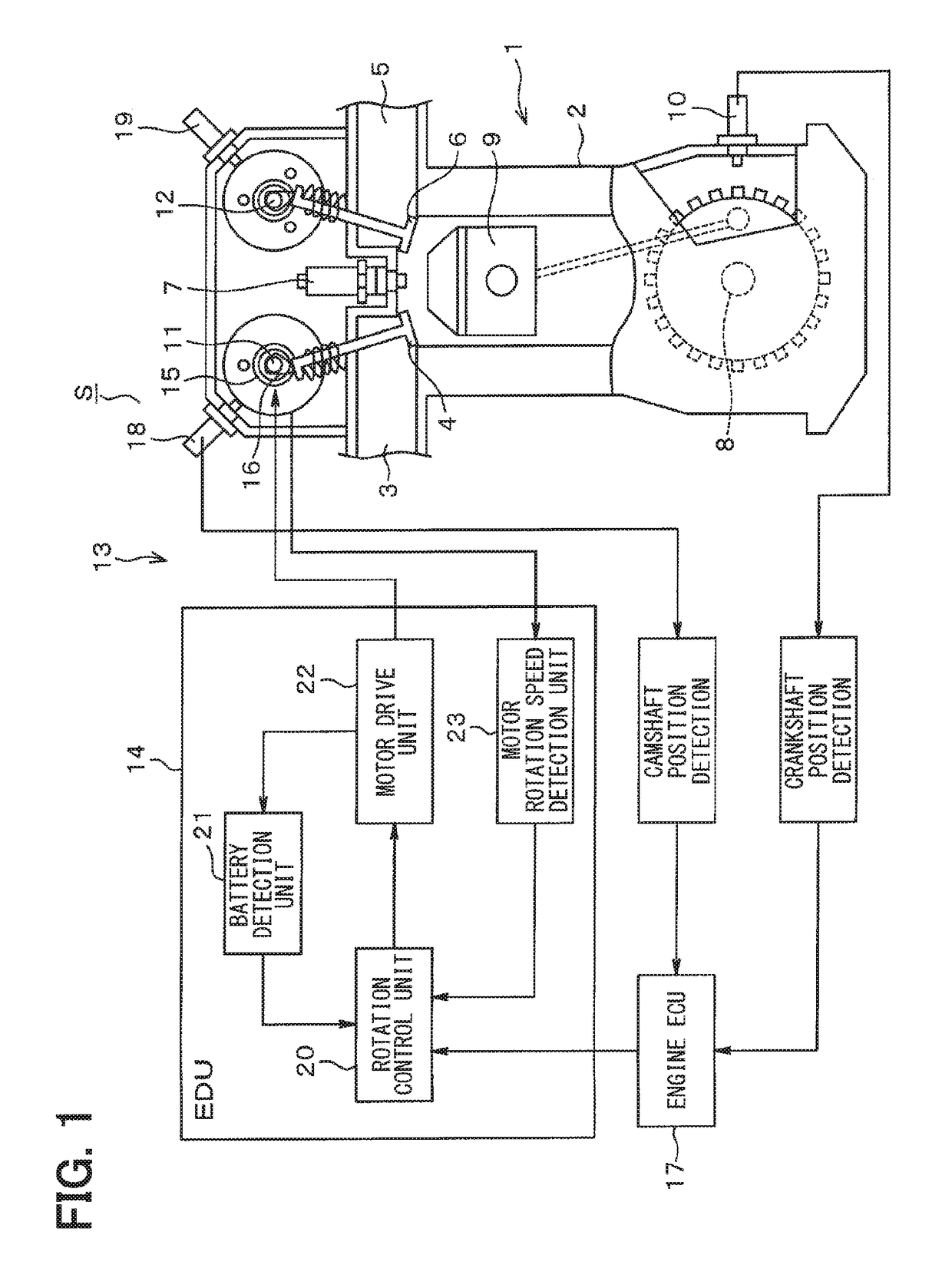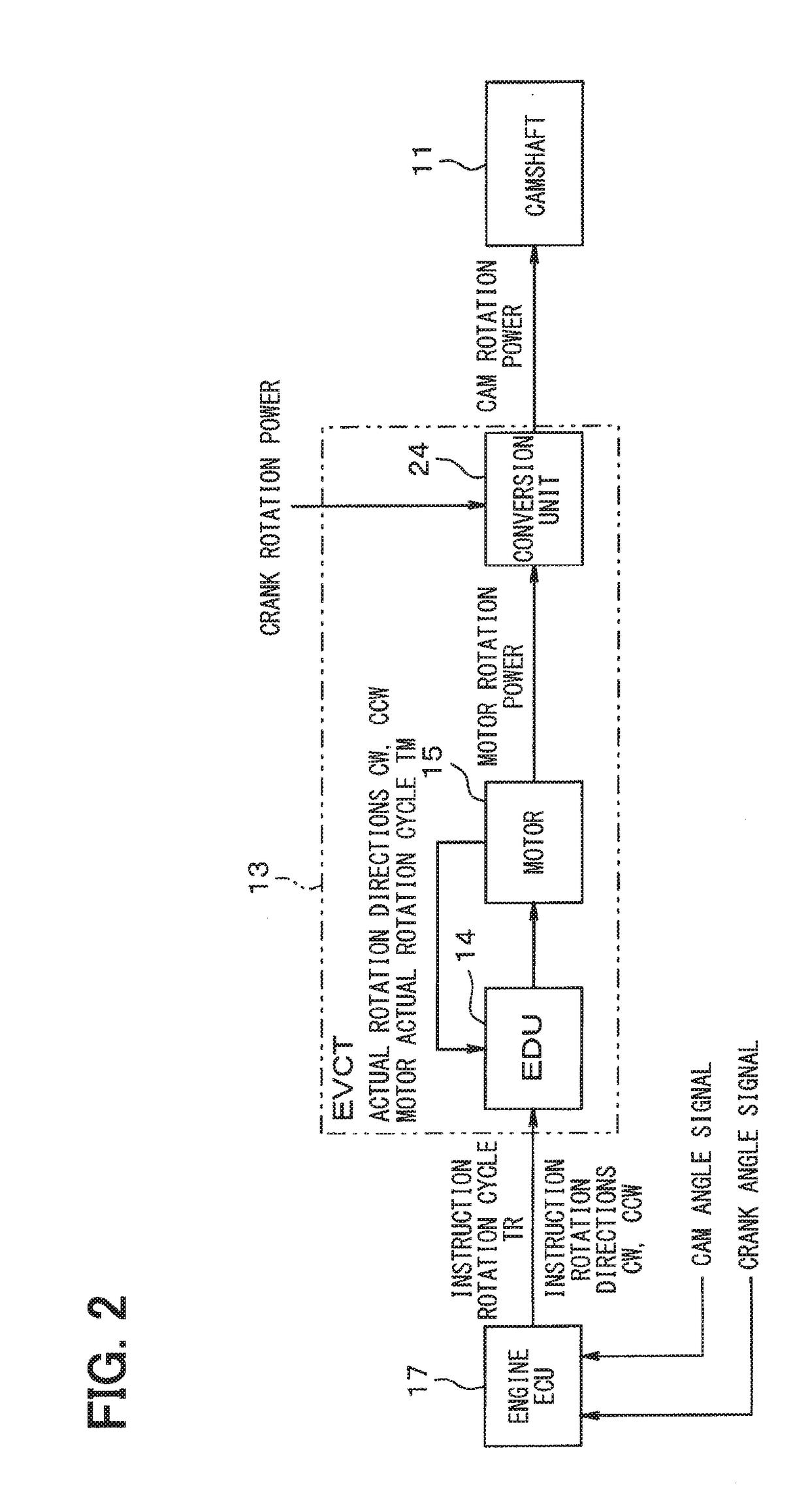Motor drive device for controlling valve timing of internal combustion engine
a technology of internal combustion engine and drive device, which is applied in the direction of machines/engines, electronic commutators, stopping arrangements, etc., can solve the problems of affecting the operation of the motor from the stopped state, and achieve the effect of reducing increasing the drive torque, and restricting the vibration of the motor
- Summary
- Abstract
- Description
- Claims
- Application Information
AI Technical Summary
Benefits of technology
Problems solved by technology
Method used
Image
Examples
first embodiment
[0031]FIGS. 1 to 11 schematically show a first embodiment. FIG. 1 shows a configuration of an electric variable cam timing (VCT) system S. A control system in which a driving source of a VCT system is operated by an electric motor is referred to as an electric VCT system S. The electric VCT system S is a system for optimizing the opening and closing timing of a valve, and can perform an improvement in a fuel consumption caused by a reduction in an exhaust emission and a reduction in a pumping loss, and an improvement in an engine output caused by an improvement in intake and exhaust efficiency.
[0032]An engine block 2, an intake path 3, an intake valve 4 that is disposed in the intake path 3, an exhaust path 5, an exhaust valve 6 that is disposed in the exhaust path 5, an ignition spark plug 7, a crankshaft 8, a piston 9, and so on are installed in an engine body 1 as an internal combustion engine. A crank angle sensor 10 is installed outside the crankshaft 8, and the crank angle sen...
second embodiment
[0081]FIGS. 12 to 15 illustrate additional illustrative views of a second embodiment. In the second embodiment, reset is continued until the battery voltage VB exceeds the torque threshold voltage so that the torque becomes sufficient.
[0082]FIG. 12 shows a configuration diagram of an electric VCT system S2 which is substituted for FIG. 1. The electric VCT system S2 includes a valve timing control motor drive device 113. The valve timing control motor drive device 113 includes an EDU 114, a motor 15 that operates with the use of a battery electric power, and a conversion unit 24 that transmits a cam rotation power to a camshaft 11 with the use of a rotation power of the motor 15 and a rotation power of a crankshaft 8. The valve timing control motor drive device 113 transmits a power generated by the conversion unit 24 to the camshaft 11 under the control of an engine ECU 17 so as to change a cam phase.
[0083]The EDU 114 is configured by combining circuits of a microcomputer such as an...
third embodiment
[0097]FIG. 16 shows an illustrative view according to a third embodiment. FIG. 16 schematically shows the contents of a reset continuation determination process in place of FIG. 15. As shown in FIG. 16, when it is determined that a vibration flag is “1” in T1, a rotation control unit 120 may determine whether a predetermined time has elapsed, or not, with the use of, for example, a timer in T2a, and may determine that the reset is continued, or not, in T3.
[0098]In other words, if the predetermined time has not elapsed, a drive control unit 120b of the rotation control unit 120 stops driving a motor 15 by a motor drive unit 22 until it is determined that the predetermined time has elapsed. When the predetermined time has elapsed, the drive control unit 120b of the rotation control unit 120 starts to drive the motor 15 by the motor drive unit 22. Therefore, if it can be guaranteed that the battery voltage VB has increased to such an extent that the battery voltage VB does not oscillat...
PUM
 Login to View More
Login to View More Abstract
Description
Claims
Application Information
 Login to View More
Login to View More - R&D
- Intellectual Property
- Life Sciences
- Materials
- Tech Scout
- Unparalleled Data Quality
- Higher Quality Content
- 60% Fewer Hallucinations
Browse by: Latest US Patents, China's latest patents, Technical Efficacy Thesaurus, Application Domain, Technology Topic, Popular Technical Reports.
© 2025 PatSnap. All rights reserved.Legal|Privacy policy|Modern Slavery Act Transparency Statement|Sitemap|About US| Contact US: help@patsnap.com



